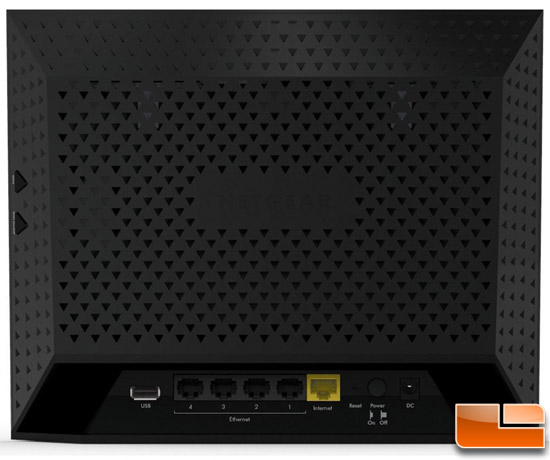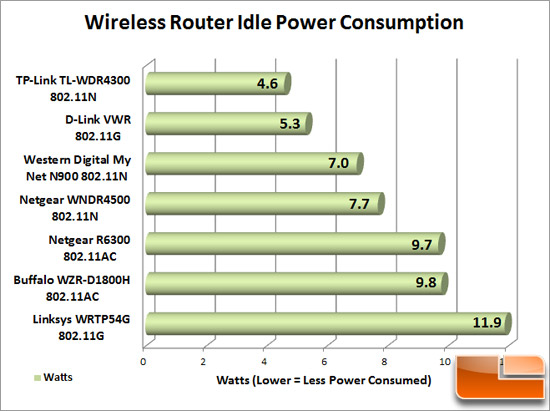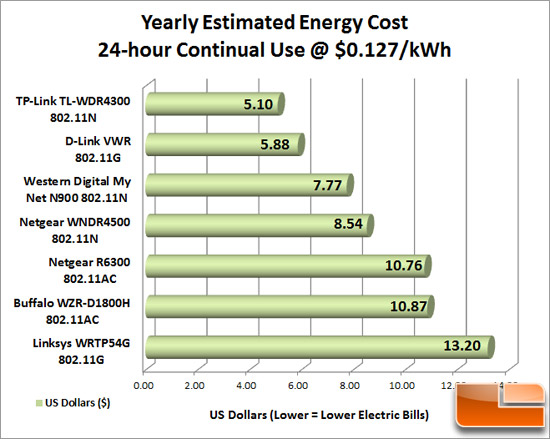Netgear R6300 802.11ac Wireless Router Review
By
Netgear R6300 Power Consumption


Benchmark Results: The Netgear R6300 is the second 802.11ac router we have tested and the power consumption is consistent with that of the Buffalo WZR-D1800H AC router. The 802.11ac protocol looks to be very power hungry at idle.
Since most people will have their routers turned on for 24-hour a day operation, we think that examining power usage is an important benchmark. Total cost of ownership (TCO) is an important financial estimate that helps consumers direct and indirect costs of a product. In our TCO calculation we will be figuring up how much it costs to have a wireless router running per year in an idle state with the unit being installed 24-hours a day. We will be using 12.7 cents per kilowatt-hour (kWh) based on the bureau of labor statistics report from April 2012 showing that amount as the national average.

Benchmark Results: It looks like the cost associated with running an 802.11ac router might be a tad bit pricey. We were hoping that the results we saw with the Buffalo WZR-D1800H were an anomaly. Unfortunately, the Netgear R6300’s power consumption confirms that this new generation of routers are pretty power hungry.

Comments are closed.